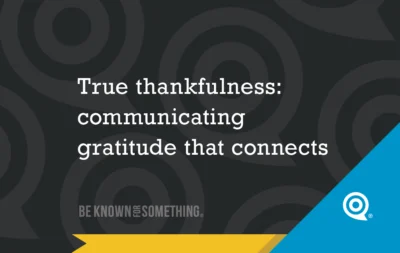Image Resolution: A Ministry Guide

As a church communicator dedicated to effective church communication, you understand that visuals play a pivotal role in conveying your church’s message. Whether it’s for your website, social media, or printed materials, getting the image resolution right is crucial.
Image Resolution Explained:
Image resolution refers to the amount of detail an image holds. It is typically measured in dots per inch (DPI). And resolution is dependent on the device or channel you’re producing for. Screen resolution requires the lowest DPI and professional printing requires the highest.
Your goal: Clarity and Sharpness. High-resolution images look crisp and clear. This is vital to make your church materials visually appealing and not pixelated (a choppy, blocky, or fuzzy appearance).
Print vs Online Matters:
Print and online/screen platforms have different requirements. While online images have a lower DPI (72-100 DPI is often sufficient), print materials demand higher DPI, usually 300 DPI, to ensure quality.
Avoiding Image Pixelation:
Images will pixelate when enlarged, leading to a loss of quality. So never enlarge an image beyond its preferred DPI. NOTE: Enlarging an image twice its size reduces the DPI by half (ie. 4” x 4” at 100 DPI enlarged to 8” x 8” makes it 50 DPI — smaller than a screen requires).
Ensure the Correct Image Resolution:
- Know Your Medium: Determine where the image will be used. Online: 72 – 100 DPI. Professionally printed materials (brochures, postcards, etc): 300 DPI. Office Printers? Often 150 – 200 DPI.
- Start with High-Quality Images: It’s OK to downscale a high-res image but not to upscale a low-res one. In fact, you can’t “add” resolution to an image that’s too low in resolution. You can only reduce its size.
- Resolution adds file size: Beware! When using high-resolution images, it adds size to your file. So don’t overdo resolution. Especially for website delivery, you always want image files to be as small as possible so your file size remains small enough to deliver quickly over the internet. That’s why, for online use, you should optimize images by compressing them without losing much quality. Use formats like JPEG for photographs and PNG for images requiring transparency. And reduce web images to 72-100 DPI.
- Testing Resolution: Take the overall image size (in inches) and multiply the inches by the DPI requirement to get the correct DPI resolution (ie. 3” x 4” for screen resolution 100 DPI will be 300 x 400 DPI; but for high-end printing 300 DPI, it would be 900 x 1200 DPI). If in doubt? Ask the manufacturer for the DPI requirement. If you’re starting with resolution and wonder how large you can use the image effectively, divide your DPI by the required resolution to get the approximate usage size in inches (2000 x 3000 DPI divided by 100 DPI for screens, means you can use it at approximately 20” x 30” on a screen).
Be careful about image resolution. This technical aspect of communication is foundational to looking great. Understanding and correctly implementing image resolution for print and online materials enhances your church’s branding and ensures your message is conveyed with the professional impact it deserves

Want 25 Game-Changing Resolutions?
Related Posts

How to Create a Church Marketing Strategy That Reaches Your Community
You’ve been called to lead a church that makes a difference in your city. That means developing a clear church

Top 10 Church Digital Marketing Strategies for 2026
What’s Changing, What’s Working, and What’s Next 2026 will be a year of rapid change for church digital marketing strategies

True thankfulness: communicating gratitude that connects
We’re just a couple weeks away from Thanksgiving. Though you might not know it by the jingling commercials already flooding

